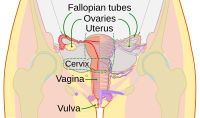
Photo from wikipedia
Abstract Informed by integrative pragmatics, elasticity theory and framing theory, this study attempts to understand how Chinese elastic language (EL) in the online health context is perceived. Drawing on data… Click to show full abstract
Abstract Informed by integrative pragmatics, elasticity theory and framing theory, this study attempts to understand how Chinese elastic language (EL) in the online health context is perceived. Drawing on data from online health information and based on the results of questionnaires distributed to 516 Taiwanese university students, this study investigates the perceptions of EL in online health information for the public. The questionnaire, containing six short excerpts in Chinese, is designed to gain the respondents’ perceptions of EL vis-a-vis non-EL. Analyzing respondents’ explanations of their preferences for EL or non-EL, we identified six frames that motivated the explanations. Each of the frames has two tendencies/ends: positive-negative communication effects; trust-skepticism; lay-professional; folk-idiosyncratic; voluntary-involuntary action; and difference-indifference. The respondents’ explanations were coded using the identified frames. The results show a hierarchical orderliness of frames that explains respondents’ attitudes toward EL and non-EL: communication, folk-idiosyncratic, trust-skepticism, followed by the action frame. This project aims to enhance a better understanding between health professionals’ use of EL and the public's perceptions of such language and to provide useful recommendations regarding the use of EL in online health communication.
Journal Title: Lingua
Year Published: 2020
Link to full text (if available)
Share on Social Media: Sign Up to like & get
recommendations!